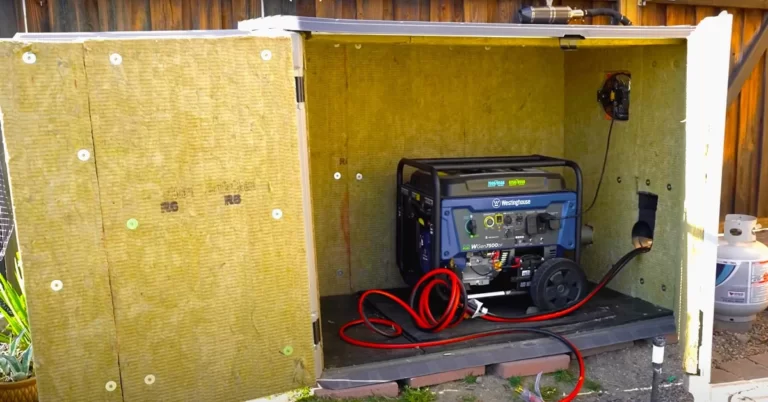What Is Generator Load Bank Testing: Why It Matters
It is very important to ensure your standby generator will last and work when you need it most, like in an emergency. Diesel standby generators that don’t run often or with light loads can build up fuel deposits, which lowers their output capacity and causes them to cost more to run than expected. Regular maintenance and load testing can prevent these problems and ensure your generator is ready to handle your load when needed. Some uses of backup power generation require load bank testing. The NFPA and NEC have rules and codes that define the requirements. This article will discuss the importance of efficient generator operation, planned maintenance, and load bank testing to keep your backup generator running smoothly and reliably.
What Is Generator Load Bank Testing?
Generator Load Bank Testing a generator involves applying an artificial load to verify that all primary components are properly working. The test involves firing the generator and running it under an artificial load at its maximum capacity for a specified period. During this time, data is recorded to offer a more thorough look into the generator’s health.
Load Banks: What Are They?
Load banks are electrical devices temporarily wired into a generator’s AC voltage output. Load is applied to the generator through calibrated switches to produce a specific kilowatt (kW) output. As a result, the operator can apply precise load steps during testing to match the generator’s rated capacity.
Why Is Generator Load Bank Testing Done?
A generator set, also called a genset,” is a reliable backup power source that keeps your business running smoothly when the power goes out unexpectedly. However, a faulty generator can cause serious disruption and costly damages to your business operations. Regular generator load bank testing is essential to a comprehensive preventative maintenance plan to ensure your genset is fully dependable and operational when needed. Here are some of the reasons why you should load test your generator:
Verification Of Performance
A load test is the only way to evaluate your generator’s performance. You can use load bank testing to ensure the generator system can generate and sustain a full load without overheating and shutting down. It also tests all system components to ensure they work together as designed and intended. Load testing in controlled conditions helps identify potential weaknesses before they cause a system failure during a utility outage.
Step-Load Testing
Building loads can cause business interruptions when transferring from utility to generator power. A portable load bank allows the load to be applied in steps where performance can be monitored and recorded. By doing this, it is made possible for the generator to handle kW loads that are gradually increased, as well as the maximum load necessary at any given crucial moment.
Exercise Period Monitoring
Most generator systems are set up to run regularly when there is little or no load. Monitoring the exercise period ensures that the generator starts and runs as planned. Still, it doesn’t guarantee that it will work the way it’s supposed to when it’s under full load. The generator system must be put through regular load tests to ensure it will work as expected when the power goes out.
Identification of weaknesses
Over time, the weather, pests, and age can make a generator system less effective. The best way to find and fix problems with a generator system is to have a well-planned maintenance schedule that includes load testing. Load testing allows for proactive maintenance, as weaknesses are identified during controlled conditions rather than during a utility outage when a weakness can cause the system to fail.
Addressing Wet-Stacking
Many diesel engine-based generator systems suffer from a problem known as wet stacking. Wet stacking occurs when the engine is not loaded appropriately, accumulating unburned fuel in the exhaust system. As a result, the system needs to improve more effectively and efficiently. Load testing with a portable load bank for at least two hours annually can reduce the impact of wet stacking on a generator system.
Load bank testing is also essential for compliance with regulations and standards. In some industries, such as healthcare, data centers, and emergency services, strict regulations require backup power systems to be tested regularly. For example, the National Fire Protection Association (NFPA) and the National Electric Code (NEC) have established regulations requiring load bank testing of emergency generators.
How Does A Load Bank Test Work?
A load bank test is an important step in ensuring the proper function of a generator. It involves putting an artificial load on the generator, slowly increasing the kW load in specific steps, and watching how well the generator can handle the boost and keep working at its best for a long time. In this article, the steps of a load bank test and how it works are explained in detail.
Step 1: Preparation
Before conducting the test, it is important to check all fluid levels in the generator, including fuel, oil, and coolant. Start the generator after everything is in order and give it time to get up to working temperature. Keep an eye out and listen for any strange sounds or potential issues. If any issues are noted, proceed with the test once resolved.
Step 2: Connecting The Loads
The loads must be connected in the next stage. Aim to have each leg support 50% of the generator’s maximum continuous rated load by starting with any substantial 220-volt loads and progressively adding smaller 110-volt loads. It’s critical to maintain a 50% range on any one leg. Choose 220-volt resistive loads wherever possible since they distribute them evenly across both legs, such as big spaces or water heaters.
Step 3: Checking Amperage And Voltage
Once the loads are connected, use an ammeter to measure each leg’s amperage and an AC voltage-reading VOM to measure each leg’s voltage to the neutral. For a 110/220-volt single-phase generator, the voltage for each leg should range from 105 to 125 volts. The current should equal one-half of the rated watt output divided by the voltage for each leg. The generator has failed the test and needs to be repaired if one or both legs drop below 105 volts when fully loaded.
Step 4: Monitoring The Generator
Once the loads are set up, keep an eye on the generator and keep this load going for the whole test. Watch for overheating, listen for strange noises, and watch the output. If something goes wrong, stop the generator immediately to limit the damage and fix the problem before you use it again. The length of the test depends on the type of generator. Light-duty portable generators shouldn’t run a full load for more than three to four hours, while larger diesel generators for industrial use should run a full load for about a week.
Step 5: Removing The Loads
Once the test is complete, remove the loads gradually and allow the generator to run under a light load for one hour. Remove all loads for five to ten minutes before shutting the generator down. The load test results are recorded, reviewed, and reported to customers for further action. A load bank report is provided, which contains thorough and comprehensive test results.
Wet-Stacking: If a generator with a diesel engine isn’t used often or only runs on light loads, unburned fuel and soot can build up in the exhaust system. It is known as “wet stacking.” Any wet stacking can burn off during a load bank test because the generator can run at full power and temperature. Hence, a load bank test tests the generator’s efficiency and eliminates any wet stacking that may have built up within the generator.
Benefits Of Load Bank Testing
As a manager or owner of a building, it’s important to ensure your generator is reliable and can keep running even when the power goes out. One of the best ways to find out what your generator can do is to test it with a load bank. This article will discuss why load bank testing is important and how it can help ensure your generator works well and reliably.
- Even if you turn on your generator often, it must work at its best. Load bank testing helps determine whether your generator can handle its designed load. By simulating a load that matches or exceeds the capacity of your generator, load bank testing ensures that your generator can perform as expected when needed.
- Load bank testing is a preventative way to find problems with your generator before they become big problems. Long-term, this can help you save time, money, and resources. You can avoid significant breakdowns and expensive repairs by spotting and resolving minor problems as soon as they arise.
- Wet-stacking happens when the generator isn’t being used much and unburned fuel builds up in the exhaust system. As a result, carbon buildup and other issues may impact your generator’s performance. Load bank testing can help burn off the leftovers that cause wet stacking and remove carbon deposits, ensuring your generator works at its best.
- Load bank testing is also used to check how well the cooling system works when the engine is under load. It’s important because a broken cooling system could cause the engine to overheat and get damaged. By ensuring the cooling system works even when the generator is working hard, you can have peace of mind that it works well.
- The most important reason to use a load bank is to ensure your generator will work when needed. During a power outage, the last thing you want is for your generator to fail or underperform. Load bank testing makes sure that your generator can give you the power you need when you need it most.
- During load bank testing, your generator’s ability to run at its maximum kW output for a set amount of time is also checked. It’s crucial because it guarantees that your generator will function properly and without interruption when needed.
How Often Does a Generator Need Testing?
When grid power isn’t available, or there’s an outage, generators are the only way to keep the lights on. But generators are like any other piece of mechanical equipment in that they need to be tested regularly to ensure they are in good shape when needed. The frequency of testing your generator depends on the use of the generator.
Federal rules say that backup generators in healthcare facilities must be checked once a month for 30 minutes at full load. It is necessary to guarantee that the generator can supply backup power in an emergency, especially for machinery that could save lives.
Generators used sparingly need to be tested more often to avoid wet stacking. Wet stacking is when unburned fuel builds up, which causes carbon to build up and, in the long run, causes damage to the engine. Testing the load bank regularly can help. To keep the generator operating at its optimum, avoid wet stacking.
Monthly tests lasting 30 minutes and longer tests lasting up to four hours once every 36 months should be performed on emergency power systems that power life-saving apparatus. These generators are very important because they power life-saving machines like ventilators. Their reliability is very important for keeping patients alive.
In addition to these rules, generators must be tested after long periods of not being used or before busy times. After long periods of not being used, testing the generator ensures it is still in good shape and keeps it from breaking down unexpectedly. In the same way, testing the generator before busy times, like when there are winter storms, ensures that it will work when needed.







